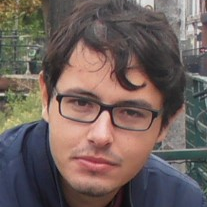Thermal Energy Storage (TES) and Its Applications
A special issue of Energies (ISSN 1996-1073). This special issue belongs to the section "D: Energy Storage and Application".
Deadline for manuscript submissions: closed (31 December 2023) | Viewed by 1466
Special Issue Editors
Interests: thermal management in electrical machines; fluid dynamics; applied thermodynamics; computational fluid dynamics (CFD); heating ventilation and air conditioning (HVAC); heat transfer; electronics cooling
Special Issues, Collections and Topics in MDPI journals
Interests: development and characterization of materials and components for thermal energy storage and conversion; detailed models of heat and mass transfer in porous media; development of renewable heating and cooling solutions
Special Issues, Collections and Topics in MDPI journals
Special Issue Information
Dear Colleagues,
The Guest Editor is inviting submissions to a Special Issue of Energies on the subject area of “Thermal Energy Storage (TES) and its Applications”. TES is a key technology contributing to the reduction of greenhouse gas emissions and therefore global warming. TES systems store energy which is then utilized at a later stage to overcome the mismatch between energy generation and energy demand. Different TES technologies must be properly matched with systems in order to be effective.
Topics of interest for publication include, but are not limited to:
- Sensitive Thermal Energy Storage technology
- Latent Thermal Energy Storage technology
- Thermochemical Thermal Energy Storage technology
- Environmental impact of TES over the life cycle of the system
- Social Impact of systems incorporating TES components
- Management methods and optimization of the energy stored in TES systems
- TES applications in systems.
Prof. Christopher Micallef
Dr. Andrea Frazzica
Guest Editors
Manuscript Submission Information
Manuscripts should be submitted online at www.mdpi.com by registering and logging in to this website. Once you are registered, click here to go to the submission form. Manuscripts can be submitted until the deadline. All submissions that pass pre-check are peer-reviewed. Accepted papers will be published continuously in the journal (as soon as accepted) and will be listed together on the special issue website. Research articles, review articles as well as short communications are invited. For planned papers, a title and short abstract (about 100 words) can be sent to the Editorial Office for announcement on this website.
Submitted manuscripts should not have been published previously, nor be under consideration for publication elsewhere (except conference proceedings papers). All manuscripts are thoroughly refereed through a single-blind peer-review process. A guide for authors and other relevant information for submission of manuscripts is available on the Instructions for Authors page. Energies is an international peer-reviewed open access semimonthly journal published by MDPI.
Please visit the Instructions for Authors page before submitting a manuscript. The Article Processing Charge (APC) for publication in this open access journal is 2600 CHF (Swiss Francs). Submitted papers should be well formatted and use good English. Authors may use MDPI's English editing service prior to publication or during author revisions.






